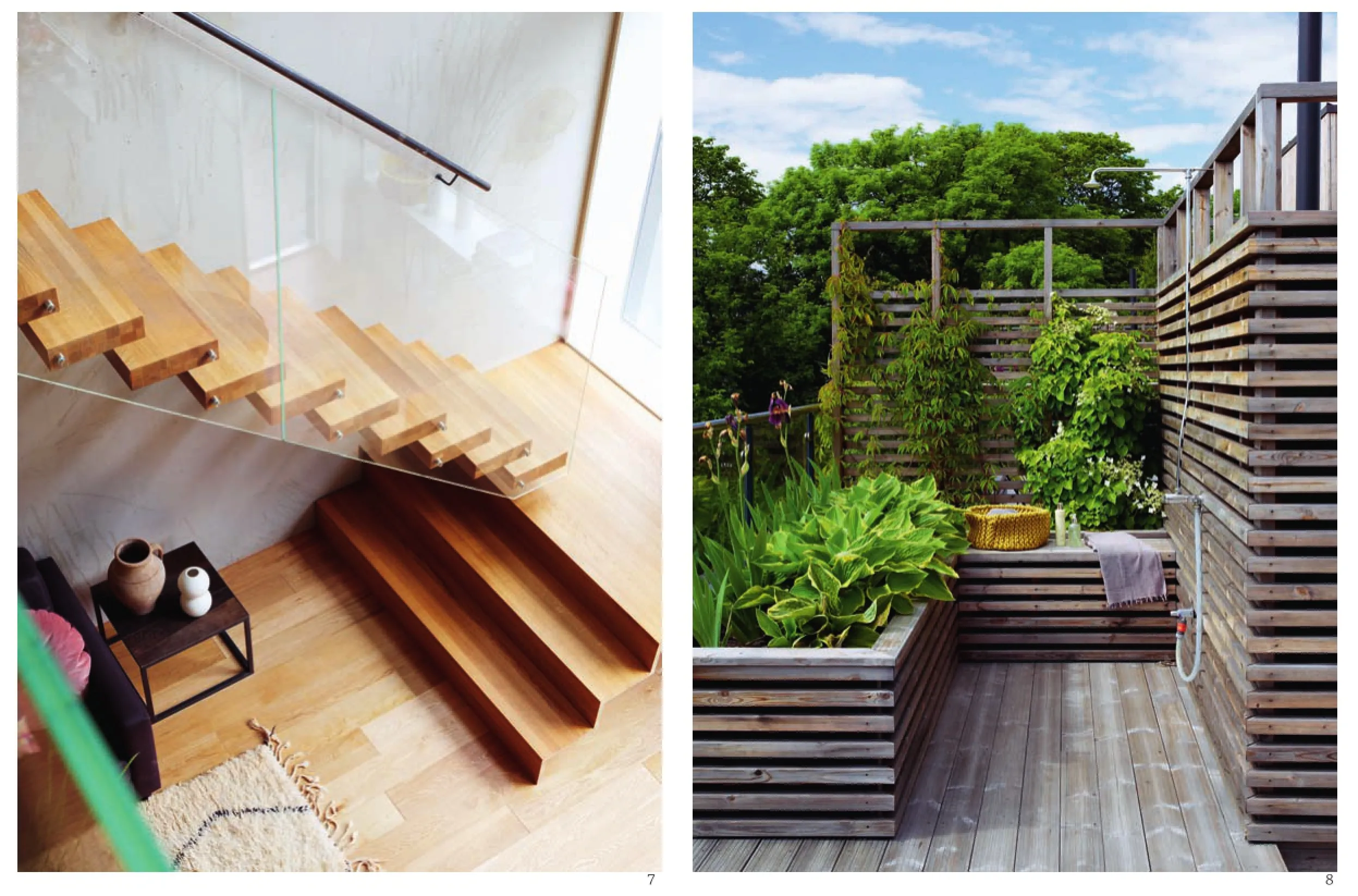帕克街5号住宅,奥斯陆,挪威
2014-03-27建筑设计KIMA建筑师事务所
建筑设计:KIMA建筑师事务所
帕克街5号住宅,奥斯陆,挪威
建筑设计:KIMA建筑师事务所
开发商的理念基于小而尴尬的城市地段,即所谓的奥斯陆中心“规划遗留空间”。这块地段包括一条介于两面共用墙之间的狭长地带。该体量内容纳了9套公寓,面积从18m2~137m2不等。平面布局紧凑但光线充足,可以通过前后立面和中央的光井射入阳光。两套公寓拥有私人屋顶花园。屋顶也配有一个公共花园。由于这块场地已被建满,屋顶花园成为开发策略的核心,以提供公共的室外空间。一个位于街道层的微型画廊面向公众开放,可在此举办不同的艺术展览。材料策略是使用少量的高品质材料。外墙由铜、热处理后的松木、清水混凝土和涂漆钢构成。室内采用了清水混凝土,白色表皮以及橡木地板。其主要结构是混凝土柱和梁。奥斯陆人口正在急剧增长,随之带来新的住房需求。对规划后遗留空间的使用,既节能环保,又是对资源的可持续利用。该住宅设计一直关注于节能解决方案。最终达成每年能耗大约为100kWh/m2,相比于同一时间的类似项目,这是非常低的能耗量。□(肖晓雪 译)
The developer's business idea is based on urban and small, awkward sites, so called "space left over after planning" in central Oslo. is site consists of a narrow strip between two party walls. The block comprises nine fats, from 18m2to 137m2. The plans are compact but well lit, from the front and rear facades and a central light well that penetrates the structure. Two fats have private roof gardens. The roof is also equipped with a communal garden. As the site is completely built over, the roof gardens become central to the development strategy in order to provide communal outdoor space. A tiny gallery ofers changing art exhibitions to the public on street level. The material strategy has been to use a limited number of high quality materials. The facades consist of copper, heat treated pine, exposed concrete and painted steel. Interiors are featured with exposed concrete, white surfaces and oak parquet. The main structure is concrete post-andbeam. Oslo has a strong population growth with a need for new housing. Utilization of space left over after planning, are environmentally efficient and a sustainable use of resources. The design of the residential facility has focused on energy saving solutions. The result is a building with energy consumption apx.100kWh/m2per year, which is very low compared to similar projects, listed in the same time period.□

1 外景/Exterior view2 地段图示/Site location3 屋顶花园/Roof garden4 外景/Exterior view
项目信息/Credits and Data
客户/Client: Infll AS
项目团队/Project Team: Martin Dietrichson, Kristofer Moe Bøksle, Haukur Morthens, Inge Hareide, Erlend Seilskjær
建筑面积/Floor Area: 945m2
摄影/Photos: Finn Stae Felberg (Fig.1), Ivan Brodey (Fig.4), Ragnar Hartvig (Fig.7, 8)


评论
金秋野:这个建筑暴露了奥斯陆的居住问题,城市在发展中日益变得密不透风,这个问题在世界上其他地方或许更加严重。尽管充分考虑了造价和能耗方面的节约,就其夹缝中的建造条件而言,还是足够奢侈了。屋顶被完整地利用起来,弥补了自然环境的欠缺。当代建筑师在灵活有效的空间利用方面经验丰富,立面尺度和檐口高度等显然也是精心安排,但仍然掩饰不住见缝插针的实用主义。清亮的玻璃、轻盈的家具和清洁的卫生间似乎都在强化匆匆的临时感,与两旁从容洗练的老房子相比并不洒脱。
青锋:在夹缝中生存并不一定就会憋屈和难过。轻盈的结构与大面积的开窗很大程度上抵消了夹缝的窘迫感。在这块被忽视的领地上创造9套采光良好的住宅,并且为两户提供私家花园,以及一个公共花园,这样的策略实际上在东亚高密度城市中有更多的用武之地。开放性的现代主义语汇仍然是此类项目的主流选择,而外墙面的减少也明显改善了建筑的能耗表现。
Comments
JIN Qiuye: This residential building exposes the housing problems of central Oslo – a city so dense it even blocks breezes. The design seems thoroughly cost and energy efficient and yet it is still luxurious when compared to the strictures of its very narrow and crevice-like site. The roof is used completely to make up for the building's lack of a natural environment or ground. Contemporary architects are experienced in the effective and efficient use of space. But though the building's elevation – the scale of the facade and theplacement of its cornice line – is carefully designed, it cannot conceal the drive of the design – the pragmatism of utilizing every little space. The building's clear glass, light furniture, and simple bathrooms seem to emphasize the temporality of the space, but seem at odds with its more traditionally designed and relaxed neighbors.

7 内景/Interior view8 屋顶花园/Roof garden
QING Feng: To live in a narrow space needn't be oppressive or awkward. Here light structure and wide windows compensate for the limits of the space. The way the project provides 9 apartments and 3 roof gardens on a site "left over after planning" is inspiring as a strategy for eastern Asia cities of high population density. The "open" language of modernism was chosen for the project but its relatively small proportion of external walls makes it seem possible for the building to be the energy efficient as well.
Parkveien 5 Housing, Oslo, Norway, 2011
Architects: KIMA arkitektur
